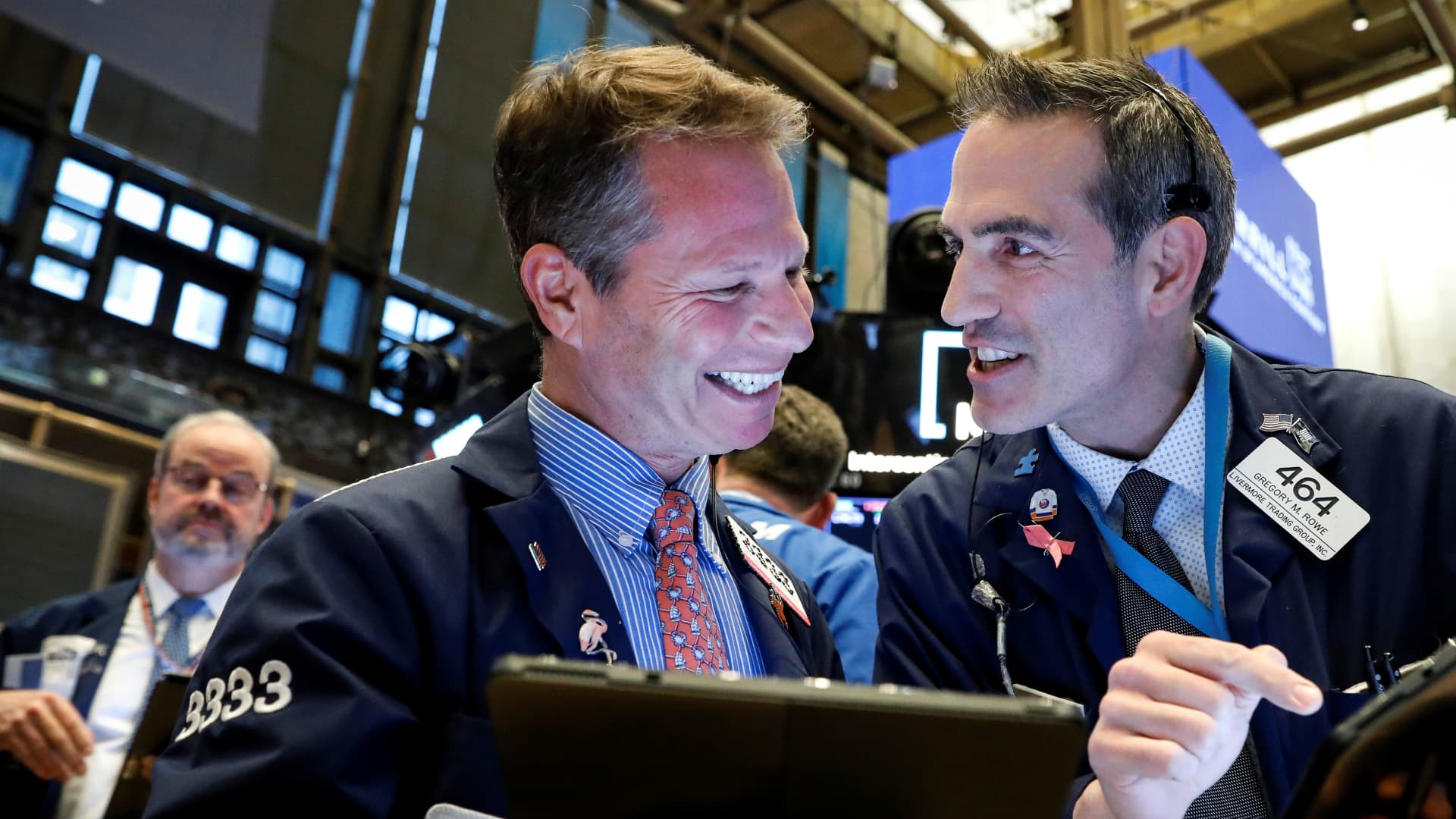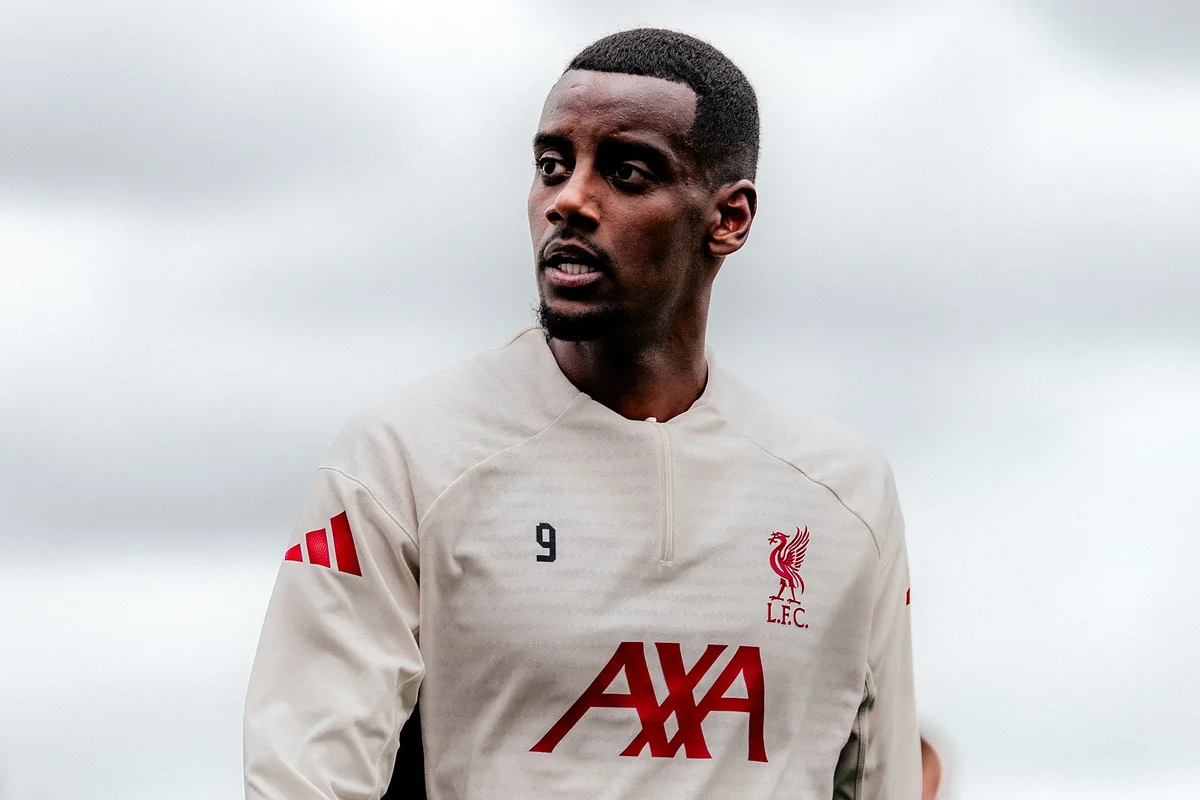
The stock market hit record high after record high over the past month as Wall Street anticipated a Federal Reserve interest rate cut that finally came. Investors got answers Wednesday afternoon, a day before our September Monthly Meeting, which will be livestreamed at noon ET . The Fed announced a quarter percentage point reduction — the first since Dec. 2024. After an initial pop, the S & P 500 and Nasdaq finished down slightly as Fed Chairman Jerome Powell hinted that Wednesday’s cut doesn’t guarantee the start of a full-blown rate-lowering cycle. Both stock indexes were only just shy of all-time highs. From our August Monthly Meeting through Wednesday’s close, the S & P 500 advanced nearly 3%, reaching seven all-time highs in the past 23 sessions. The Nasdaq rose roughly 2.5%, also securing seven all-time high records. Since the last meeting day on Aug. 14, we sent members eight trade alerts, which included exiting Coterra Energy . Aerospace giant Boeing was added to the portfolio roughly three weeks later. As we executed these trades, some clear winners and laggards from our 32-name portfolio emerged. There was no through-line for outperformance — and lack thereof — unlike our past several other monthly analyses , which can be seen in our wide array of sectors. Spanning from biotech to cybersecurity, here’s a breakdown on what moved our three best and worst-performing stocks over the past month. Winners 1. Palo Alto Networks: +17% This cybersecurity name owes its huge gains to a better-than-expected quarterly earnings report in mid-August. Palo Alto Networks beat across all key metrics, surpassing expectations on revenue, adjusted free cash flow margin, adjusted earnings per share (EPS), total remaining performance obligation (RPO), and next-generation security annual recurring revenue. The earnings report, released on Aug. 18, caused the stock to skyrocket. The move higher helped make up for losses seen in late July following the reports of Palo Alto’s $25 billion CyberArk acquisition and the official announcement. Based on Palo Alto’s quarterly earnings report, we think this deal was announced from a position of strength. 2. Broadcom: +11.2% Broadcom can also thank a fantastic earnings report in early September for its outperformance. The chip stock advanced as management talked about a new mystery customer that ordered $10 billion with its custom AI chip business. As a result, the Club hiked our Broadcom price target to $350 apiece from $290, while maintaining a hold-equivalent 2 rating . Less than a week later, Oracle’s blowout quarter lifted AI-related stocks, including Broadcom. Fellow Club holding Nvidia stock saw an increase. That same session, Broadcom approved CEO Hock Tan’s long-term equity award, which links the exec’s compensation to the company’s success in AI. We took profits in Broadcom on Monday in recognition of the rally and to right-size the position, which swelled to an over 5% weighting in our portfolio. 3. Eli Lilly: +11.1% A series of announcements caused Eli Lilly shares to outperform. The stock initially surged in late August after oral GLP-1, orforglipron, had successful results in a third Phase 3 trial – good news for the company’s blockbuster weight loss treatments. A few weeks later, Eli Lilly stock jumped after a draft report that GLP-1 obesity drugs are cost-effective at their current prices. The stock then saw significant gains yet again in the recent sessions. Management on Tuesday announced plans to build a $5 billion plant in Virginia. This comes as the Trump administration threatens higher tariffs on the pharmaceutical industry, which heavily relies on imports from Europe. Finally, shares rose briefly Wednesday after its obesity pill outperformed competitor Novo Nordisk’s oral drug in a head-to-head diabetes trial. Like Palo Alto Networks, Lilly rallied over the past month from lower levels after disappointing earlier trial data on orforglipron. Laggards 1. Starbucks: -10.6% There wasn’t a single negative catalyst that caused Starbucks to be our worst-performing name. Coffee futures, however, did rise over the period, which could signal to investors that key ingredients for Starbucks are becoming more expensive. An increase in the cost of raw materials, if not offset by cost-cutting initiatives or price increases, can weigh on profits for Starbucks. The turnaround of the coffee giant being engineered by CEO Brian Niccol has also been taking longer than expected. Niccol, fresh off a successful overhaul and run at Chipotle , had his one-year anniversary at Starbucks on Sept. 9. 2. Danaher: -8.2% Shares of the medical diagnostics equipment maker lagged amid weakness in health-care names broadly. Investor sentiment weakened further after executives from peer Revvity indicated that the company’s diagnostics business faces challenges due to changes in China’s Diagnosis-Related Group policy. These changes can cause pricing pressure on Danaher’s diagnostics and life sciences businesses in China, which has been a troubled market for the company. 3. Boeing: -8% Our most recent portfolio addition, initiated on Sept. 8, made the list. The aerospace name was weighed down, in part, by CEO Kelly Ortbger’s remarks at an industry conference that indicated the company was falling behind on certification for the 777X. We saw the dip as a buying opportunity . The update certainly wasn’t positive, but certification delays aren’t uncommon. It’s important to monitor whether the delays lead to any order cancellations. The Club continues to believe in the turnaround for the aircraft maker’s balance sheet, which looks better positioned than before its November equity raise. (See here for a full list of the stocks in Jim Cramer’s Charitable Trust.) As a subscriber to the CNBC Investing Club with Jim Cramer, you will receive a trade alert before Jim makes a trade. Jim waits 45 minutes after sending a trade alert before buying or selling a stock in his charitable trust’s portfolio. If Jim has talked about a stock on CNBC TV, he waits 72 hours after issuing the trade alert before executing the trade. THE ABOVE INVESTING CLUB INFORMATION IS SUBJECT TO OUR TERMS AND CONDITIONS AND PRIVACY POLICY , TOGETHER WITH OUR DISCLAIMER . NO FIDUCIARY OBLIGATION OR DUTY EXISTS, OR IS CREATED, BY VIRTUE OF YOUR RECEIPT OF ANY INFORMATION PROVIDED IN CONNECTION WITH THE INVESTING CLUB. NO SPECIFIC OUTCOME OR PROFIT IS GUARANTEED.



